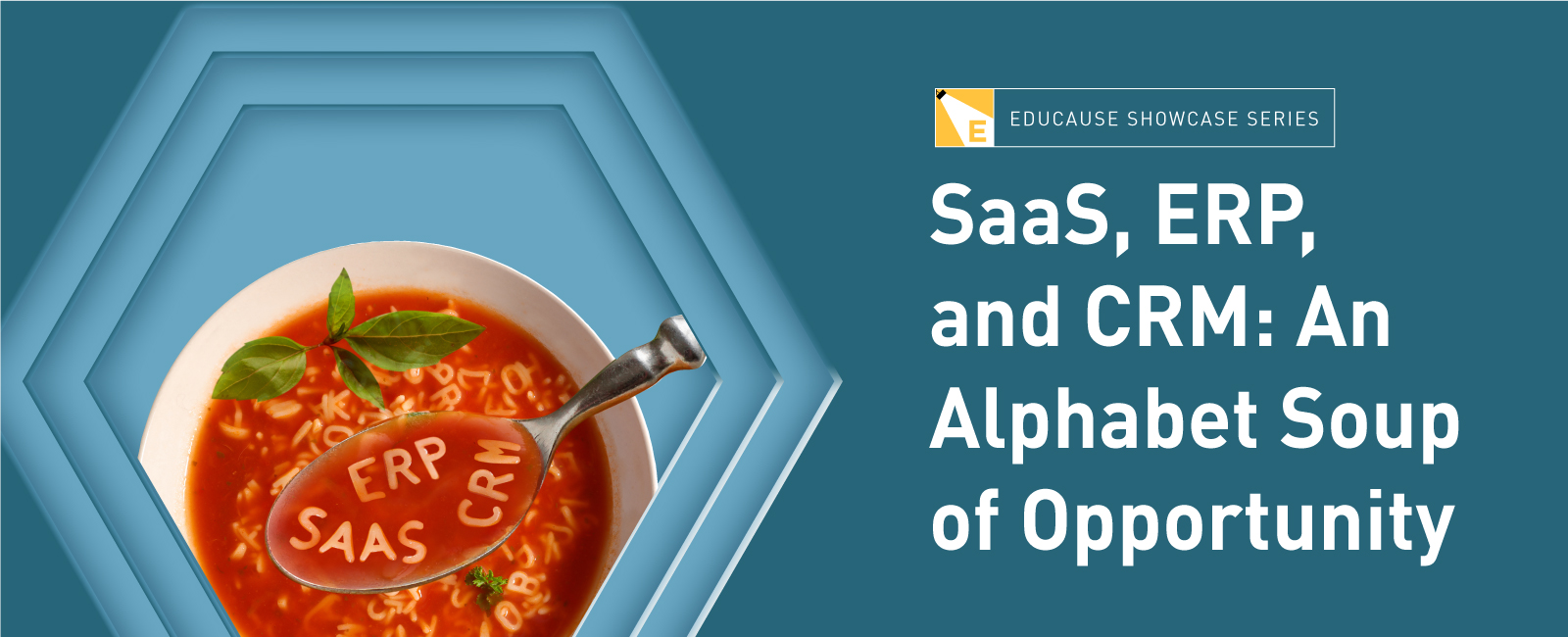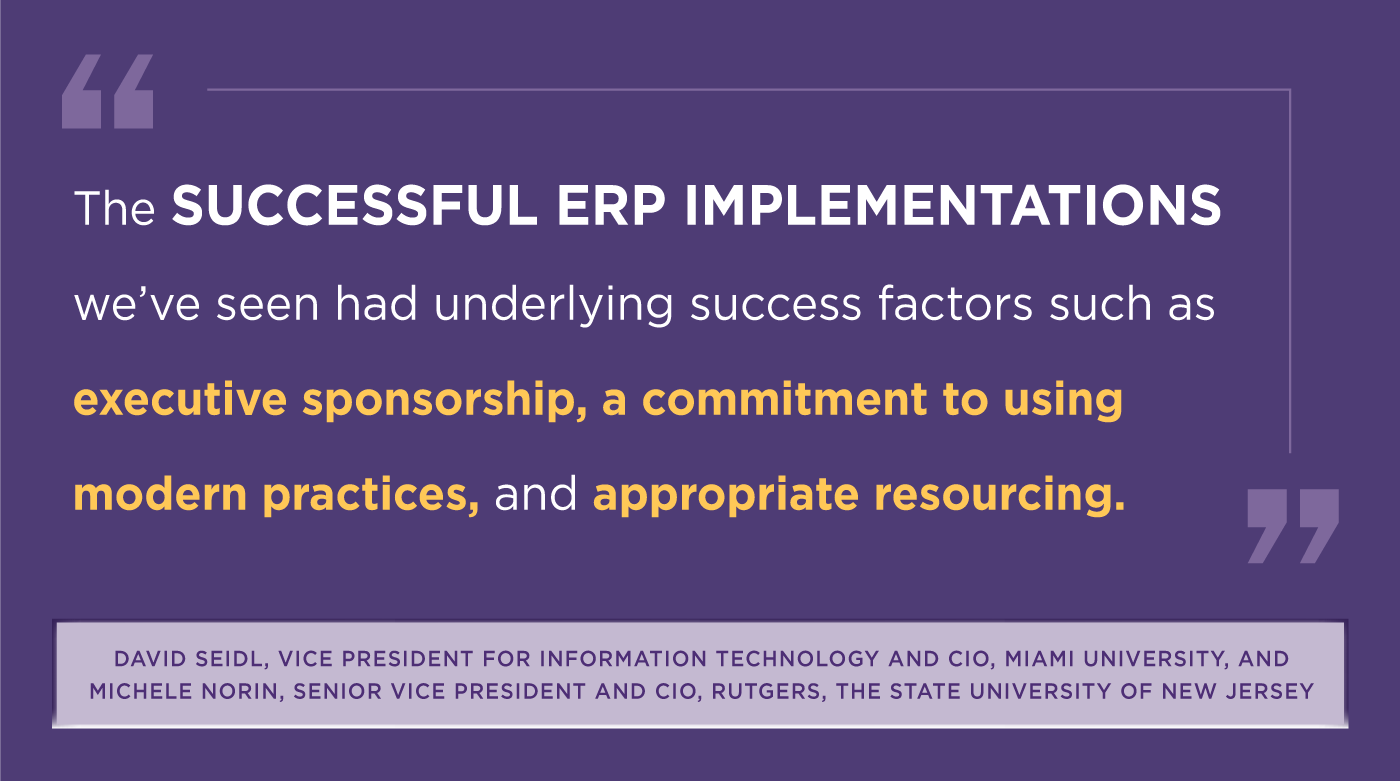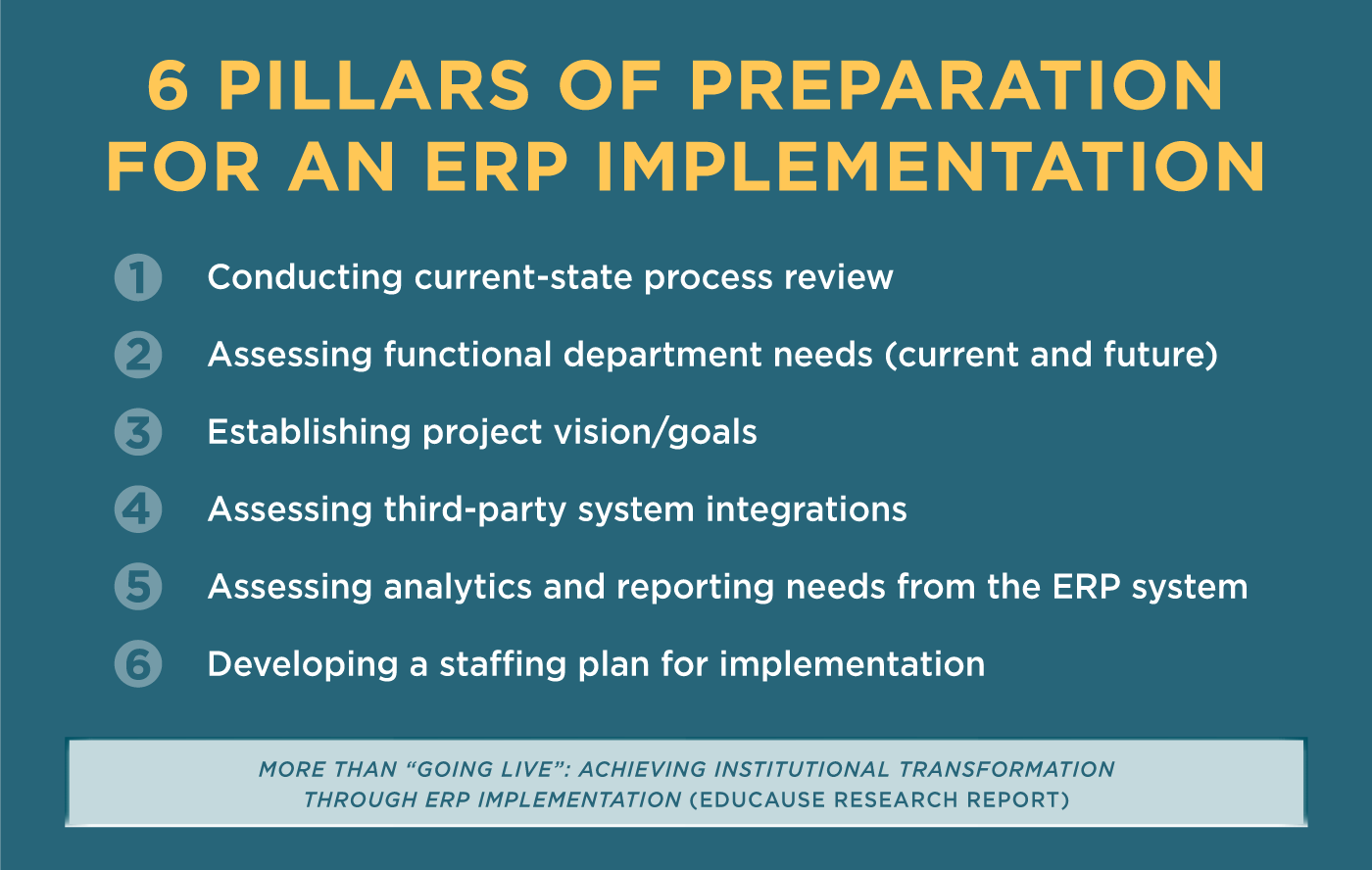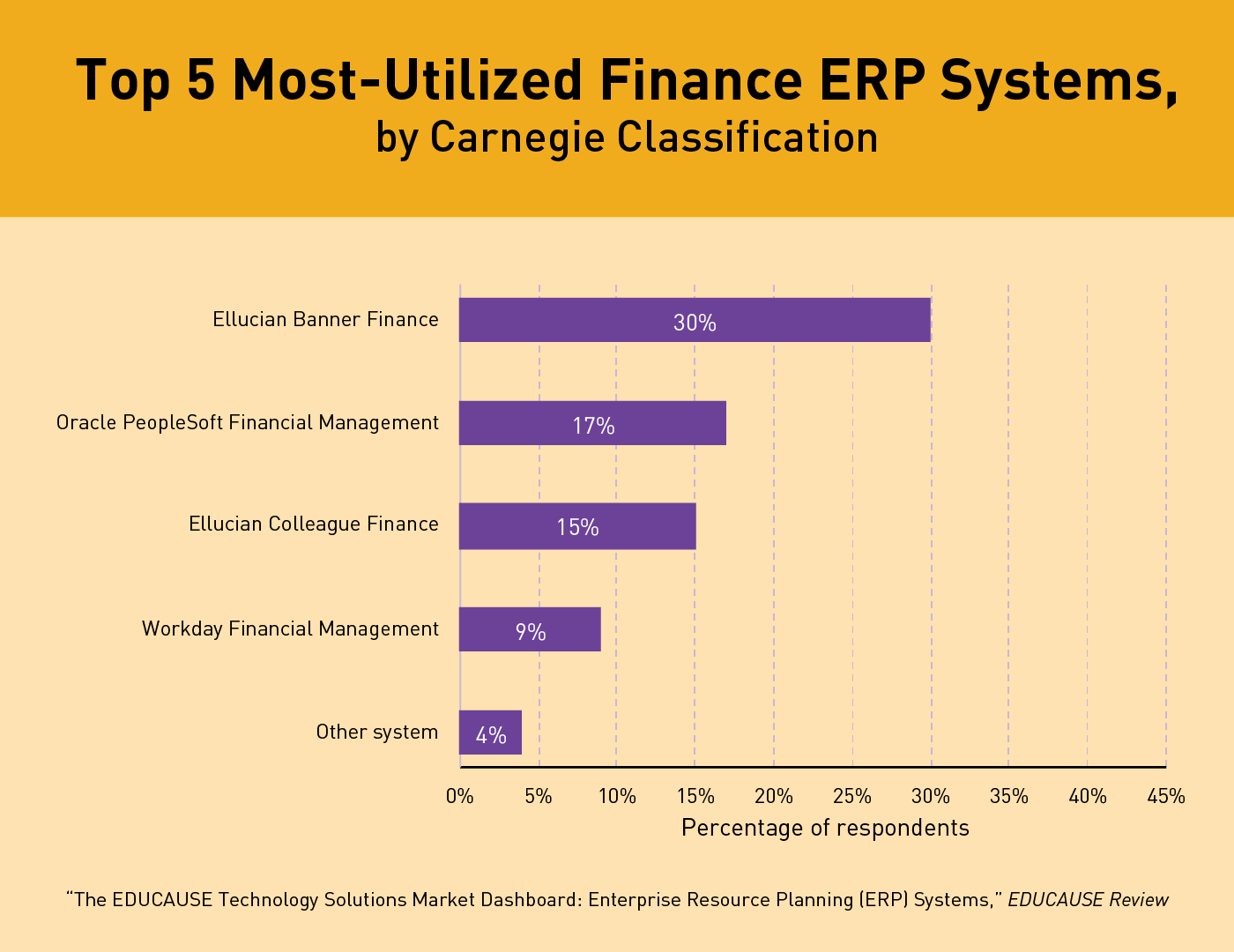SaaS, ERP, and CRM: An Alphabet Soup of Opportunity

The implementation of a new system or ERP is an opportunity to work with stakeholders across campus to improve processes, build better data-management policies, and enable data-informed decision-making. Capitalizing on the strategic value of various systems depends on having the will, the vision, and the methods for effective change management.
The Will to Change: Deciding to Replace
The process of deciding whether and how to replace an existing ERP system can be strikingly complex, involving issues of functionality, costs, data management, and cultural change. Considerable planning is necessary for the amount of change that will occur, the number of people who will be involved, and the business processes that will be disrupted.
Read “Real-World Experiences and Advice on Selecting, Implementing, and Running Next-Generation ERPs,” EDUCAUSE Review.
The Vision to Change: Implementing for Transformation
Campus leaders need to set their sights higher than just a successful "go live." Extensive preparations and a deep exploration of the drivers of an ERP implementation can bring about institutional transformation and help achieve institutional missions.
Dive into More Than “Going Live”: Achieving Institutional Transformation through ERP Implementation.
The Methods to Change: Understanding the Market
For institutions experiencing staffing and budgetary challenges, implementing finance, HR/payroll, and/or SIS ERP systems presents opportunities to increase efficiencies and automate a wide variety of administrative processes.
Explore "The EDUCAUSE Technology Solutions Market Dashboard: Enterprise Resource Planning (ERP) Systems," EDUCAUSE Review.
Showcase Webinar
Missed the Showcase Webinar | SaaS, ERP, and CRM: An Alphabet Soup of Opportunity on August 22? Check out the recording to hear from experts in ERP implementations.
Hear from the Community & Analysts
Go Further
Learn from Your Peers
"Jackie Malcolm Bailey on Communicating for ERP Implementations" [podcast], EDUCAUSE Review
Dig Into the Library
Feed Your Curiosity
- Demo Day | ERP Solutions
- "Developing an Enterprise Technology Strategy: Questions to Ask," EDUCAUSE Review
- "Process Improvement May Not be Happening at Your Organization," EDUCAUSE Review
Connect with Community Groups
We hope the lessons from this Showcase will guide your discussions about enterprise system integrations. Next up, we’ll explore the latest about using technology to increase efficiency and streamline the path to success in Smooth Sailing for the Student Experience launching September 11.








